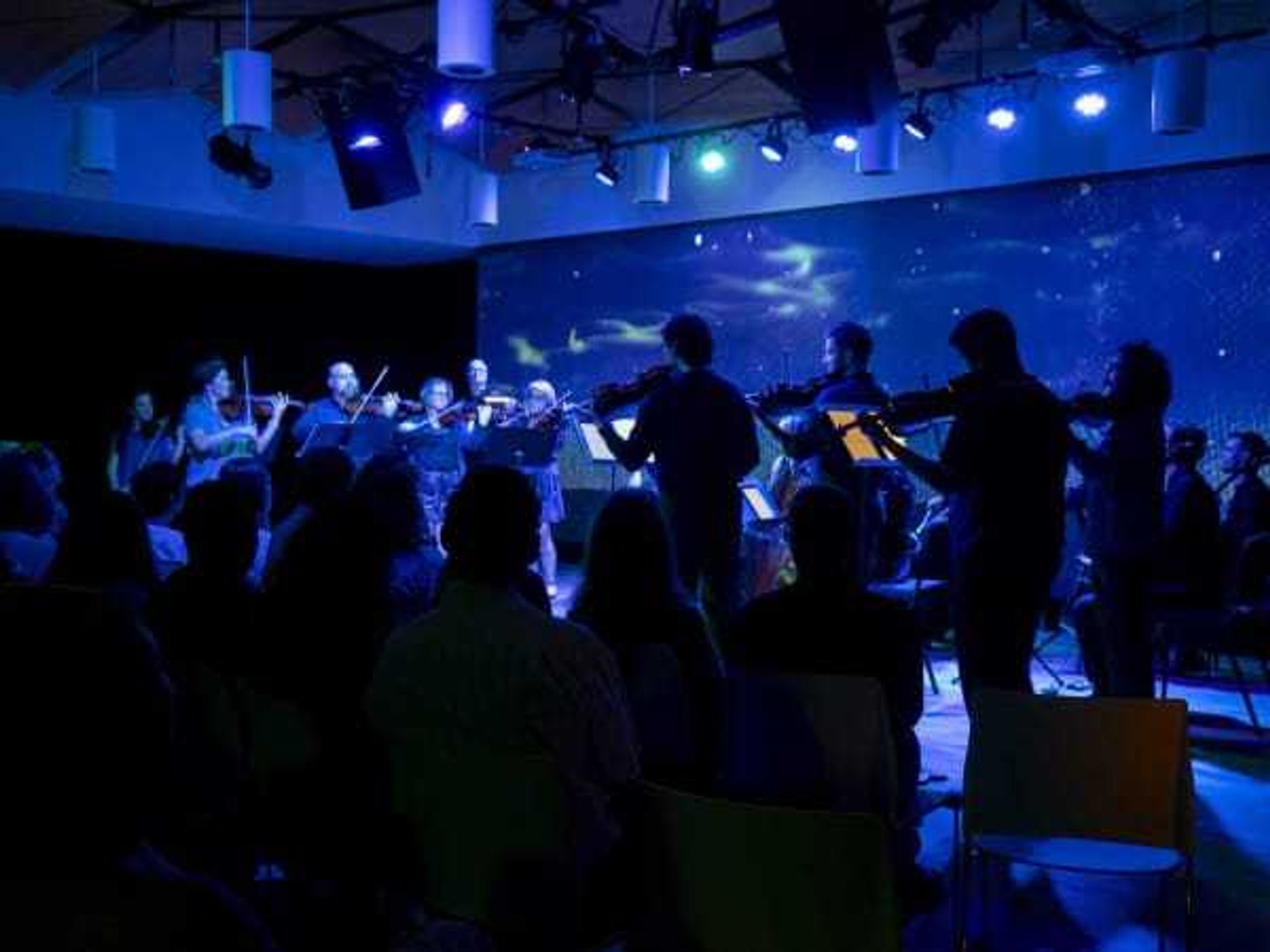dramatic dance
Ballet Austin travels to Holocaust Museum Houston, set to translate theemotional experience from story to stage
- Photo by Amitava Sarkar
- In 2005, Light was part of a city-wide project consisting of dance, art,lectures and educational events, culminating in Mills' ballet and a lecture bythe legendary Elie Wiesel. As a cultural community effort involving a majorballet company, nothing rivals the depth and reach of this project. It has setthe standard for how a ballet company can engage with its citizens and itsleaders.Photo by Amitava Sarkar
- Photo by Amitava Sarkar
- Photo by Amitava Sarkar
 Ballet Austin Artistic Director Stephen Mills visiting Triblenca ExterminationCamp in Poland.
Ballet Austin Artistic Director Stephen Mills visiting Triblenca ExterminationCamp in Poland. Ballet Austin Company Dancers touring the Holocaust Museum Houston.Photo by Kelly Webeck
Ballet Austin Company Dancers touring the Holocaust Museum Houston.Photo by Kelly Webeck These are Ballet Austin Company Dancers touring the Holocaust Museum Houston.Photo by Kelly Webeck
These are Ballet Austin Company Dancers touring the Holocaust Museum Houston.Photo by Kelly Webeck
"Does anyone know what bearing witness means?" asked the Holocaust Museum Houston docent to the crowd of Ballet Austin dancers and staff. "It means being awake to something," offered Michelle Thompson, one of seven veterans of Stephen Mills' epic ballet, Light/The Holocuast & Humanity Project, slated for a March 23 - 25, 2012 performance at the Long Center.
To re-enter the world of Light, Mills recently took his flock on a field trip to the Holocaust Museum for a day of learning, reflection and time with survivors. Ordinarily, remounting a ballet is more about looking at DVDs and getting back into the studio. For Light, Mills had other plans. "You have to know the story to dance this piece," he says. "Most of the dancers are new to the ballet."
A little background: In 2005, Light was part of a city-wide project consisting of dance, art, lectures and educational events, culminating in Mills' ballet and a lecture by the legendary Elie Wiesel. As a cultural community effort involving a major ballet company, nothing rivals the depth and reach of this project. It has set the standard for how a ballet company can engage with its citizens and its leaders. Rick Perry and Ann Richards even chaired the event. "I bet it was the only time their names ever appeared together," quipped Mills.
The artistic director didn't just go into the studio to create a ballet about the Holocaust, he steeped himself in history and traveled to seven camps in Europe, including Treblinka, Auschwitz and Birkenau. A Warren Family Fellowship allowed him to immerse himself in the Museum's archives and spend time with survivor Naomi Warren, the woman whose story was the inspiration for the ballet.
Mills has since staged Light on Pittsburgh Ballet Theatre. "We have created a model that can be adapted to any city," he says.
As expected, a solemn mood characterized the day. The dancers began by observing the art on the walls, followed by a ritual of remembrance — leaving a stone to represent children lost — and transitioning into the heart of the exhibit where the most difficult history in Western Civilization would be revealed. We may know the general facts, but it's the specifics that can be so hard to fathom.
Mills is excited to be bringing his ballet back to the city with a (mostly) new group of dancers. "It's one of the most consequential pieces we have ever produced," insists Mills. "I believe art can be life altering. It's also important to prove our relevance. If I can use my platform to do that, then we should do it again." This time around Mills has AISD superintendent Meria Carstarphen, Mayor Lee Leffingwell and Austin Police Chief Art Acevedo on his team.
For Thompson, revisiting this work is a must to re-connect to the material. She has continued to read and learn more since 2005. "I remember the first time I met Naomi [Warren] when she came to watch rehearsal," says Thompson. "I feel her story when I am dancing. That experience continues to inform my performance." Now a mother, Thompson feels a renewed sense of responsibility toward the mission of the ballet. "It's such a valuable message. I have a son now. I want to educate him on tolerance and kindness. It starts at home," she adds.
The petite dancer is also charged with helping the new dancers enter the emotional world of the piece. "I remind them that we are here to help and support," she says. As for ballet being a place to address the Holocaust, Thompson is on board. "When Elie Wiesel came to watch the dress rehearsal, he reminded us why we are dancing," she recalls. "Art happened in the camps. Art can ignite a conversation."
The day ended with precious time with survivors, allowing the dancers to get even closer to the stories of the Holocaust experience. Warren, now in her 90s, shared her story in a straightforward manner. Amidst the occasional sniffs, you could hear a pin drop as the dancers absorbed every word. After being stuffed into a rail car with her mother and hundreds of others, the doors opened to an unknown landscape. "Finally, we could breathe fresh air, little did I know that I had arrived in Auschwitz." Warren relayed the story of her mother giving her a little push to be in a group of younger people. "It was the push that saved my life."
Her story did not end with the Holocaust though. Like the ballet, Warren ended on a note of hope. "I have been so lucky. I got married. I had a life," she added, smiling with outstretched arms, "I can be with all of you today."
Stephen Mills tells the Light story at TEDxSMU




